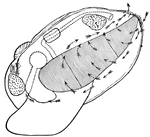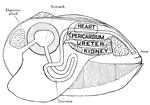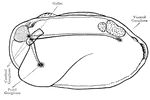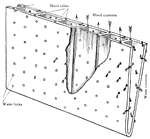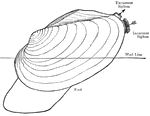Clipart tagged: ‘Bivalves’
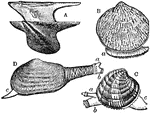
Forms of Bivalves
"Several Forms of Bivalves. A, Avicula; B, Pectunculus, with extended foot (a); C, Venus, with respiratory…

Clam
this is the common round clam of the Atlantic coast found from Texas to Cape Cod. It is frequently seen…
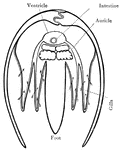
Clam
Cross section of the body of a clam, through the heart. Arrows indicate water current through the gills.
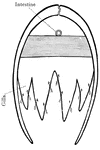
Clam
Cross section of the body of a clam, through the posterior adductor muscles. Arrows indicate water current…
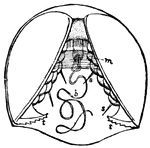
Clam
Young clam, still within the egg membrane. m, adductor muscle; t, hooks by which it attaches itself…
Razor Shell Clam
The razor shell clam has a shell somewhat resembling in shape and size the handle of a razor.

Right Valve of Mollusk
Bivalves are molluscs belonging to the class Bivalvia. They have two-part shells, and typically both…
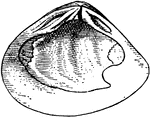
Right Valve of Mollusks
An illustration of the right valve of a mollusk. Bivalves are molluscs belonging to the class Bivalvia.…
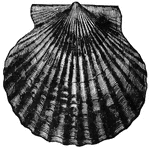
Scallop
Scallop; also known as the crusader's badge. While at rest the scallop lies on the bottom with its valves…
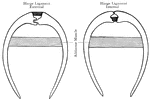
Clam Shell
Mechanism for opening and shutting a clam shell, note the internal and external hinge ligament..

